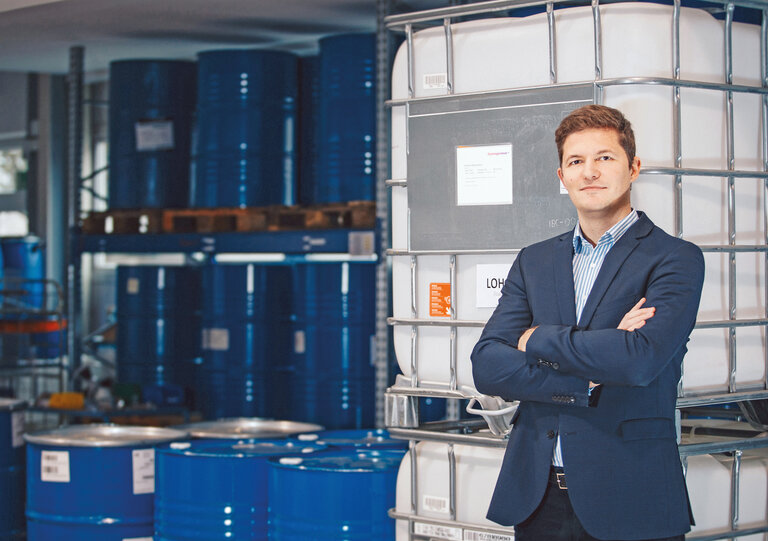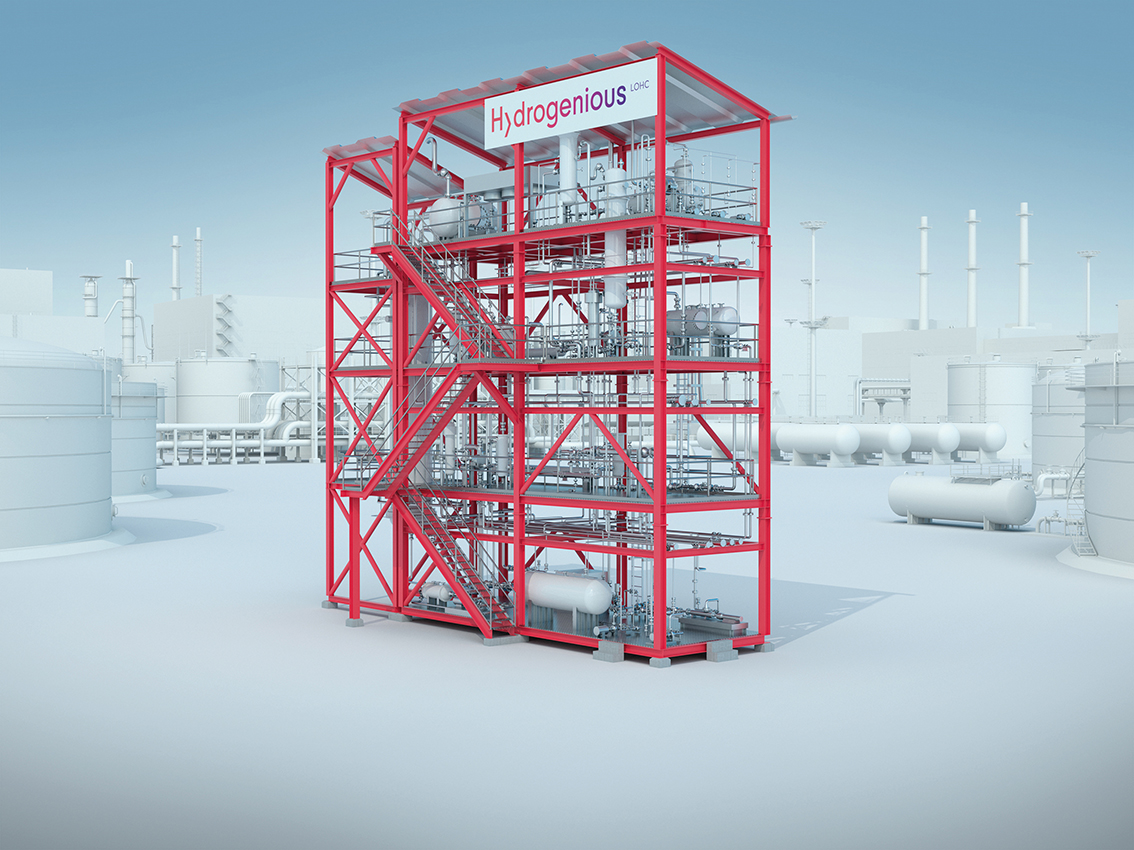
Breakthrough technology for simple hydrogen transportation
Sustainably produced (or green) hydrogen is one of the key components of the energy and resource transition. But how do you get it from a to b? There are several options for that. The German company Hydrogenious LOHC Technologies has developed the simplest and safest method. Their Liquid Organic Hydrogen Carrier technology allows you to transport hydrogen as if it were a petroleum product, using all existing infrastructure.
Transporting hydrogen as if it were a petroleum product: Hydrogenious LOHC, Bilfinger and Vopak are going to make it big. More than ten years ago, Daniel Teichmann and his co-founders developed the technology that is currently generating a lot of interest from the market. 'Already during my doctoral research I was captivated by hydrogen,' says Daniel. 'I wanted nothing more than to make the LOHC technology I discovered commercially viable. So in 2013, together with professors Peter Wasserscheid, Wolfgang Arlt and Eberhard Schlücker, I founded the company Hydrogenious. In those early years, there was little interest in green hydrogen, let alone the potential of LOHC storage technology. So these were years in which we had to work hard to convince politicians, industry and the public of the role that hydrogen would play in our economy. But certainly in recent years, the importance of hydrogen has become well understood.'
Hydrogen is crucial
The global significance of green hydrogen is clear, Daniel believes. ‘It goes without saying that we have a global problem of climate change. We must therefore get rid of fossil fuels. Hydrogen is crucial in this energy transition, because we simply cannot solve everything with electricity. In addition to electrons, we also need molecules. Because it is difficult to store electrons in large quantities, nor to import them over long distances. This makes it complicated to provide sufficient renewable energy at all times. The solution? Molecules, especially in the form of hydrogen. Another advantage of molecules is that they are much easier to transport. In sunny countries, especially around the equator, the generation of green energy is very cheap, but you simply cannot pull high-voltage cables from Europe to North America, South America, Australia or Africa. A third reason is that you need green molecules as a raw material, for example for the decarbonisation of the steel industry. I don’t see hydrogen as a competitor to direct use of electricity, but as an important partner.’
Like it’s oil
Because the need in Northwest Europe is simply many times greater than the local production capacity, we will get a large part of our hydrogen from somewhere else. But how do you transport that? Frequently mentioned methods are, for example, hydrogen carriers such as methanol or ammonia. Challenges of these technologies are their relative risks, and the high demands on infrastructure for storage and transport. ‘The idea of our LOCH technology is to make hydrogen available without the drawbacks of other ways of transporting it,’ Daniel explains. ‘With LOHC technology, you transport hydrogen as if it were diesel, for example. You can even use the existing infrastructure for this: think of oil tankers, storage tanks, inland vessels and road tankers. With LOHC you chemically bind hydrogen to a thermal oil (benzyltoluene). Then, just like traditional liquid fuels, you can transport it to where you need it. There you release the hydrogen via dehydrogenation, after which you can reuse the LOHC (benzyltoluene) hundreds of times to bind new hydrogen.’
Scale up
According to Daniel, the LOHC technology is safer than other methods because there is no fire risk and because it is relatively easy to store and transport. ‘Moreover, this allows you to transport high-quality pure hydrogen very efficiently and release it where you need it. You do this in a so-called Release-PLANT that is built on the customer’s site. We have been working with Bilfinger on this for a year and a half. They help with the engineering, procurement and construction (EPC) of the storage and Release-PLANTS. Through their expertise, they contribute to scaling up the technology, especially in this crucial phase of the energy transition. In addition, together with our partner and investor Vopak, we recently announced a joint venture, LOHC Logistix, to facilitate the supply of green hydrogen to customers. We do this using LOHC-based transport. Together we are building a large LOHC storage facility at Chempark Dormagen (Germany). A larger Release-PLANT with a release capacity of 1.5 tons of hydrogen per day will follow in the Port of Rotterdam. This is of course also very interesting for tank terminal operators such as Vopak, because they can use their existing storage tanks and other infrastructure for a completely new and sustainable product.’
Take position
These are interesting times in the energy and raw materials transition. Well-known names such as Shell and BP are switching to renewable fuels such as hydrogen, and a large number of new players are emerging. ‘The hydrogen value chain is still very dynamic at the moment,’ says Daniel. ‘I feel that the cards are being shuffled for the future and we are therefore in a very exciting phase. As a technology supplier, we respond to this. It offers great opportunities for companies to take their position in the new economy!’
Daniel Teichmann
Daniel Teichmann studied Industrial Engineering at the Friedrich-Alexander-Universität Erlangen-Nürnberg (FAU). He then obtained a PhD in Chemical Engineering from the same university. As part of his PhD research, he immersed himself in hydrogen storage and transport. In 2013, with the help of three other FAU professors, he founded Hydrogenious LOHC Technologies.

